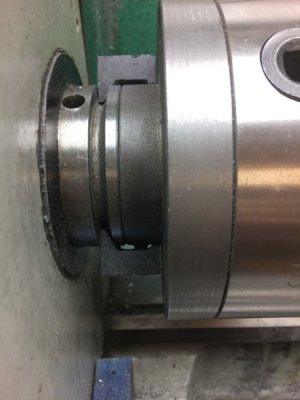- Joined
- Oct 21, 2014
- Messages
- 2,156
RJ have seen that a couple of times on small lathes like my sherline, only a 3.5 inch chuck, but gripping heavy object, shut down the motor slows/stops quickly, and the thing unscrews and goes for a bouncing ride. Jump out of the way and hope it all survives. Did the same with a Asian 10X24, At least it was not spinning that fast. But a lot bigger chuck and had a 7x5 piece of steel chuck up in it, lathe stopped and the chuck did not. Again step out of the way and hope all turns out ok Thus next lathe will have a different type of setup.


